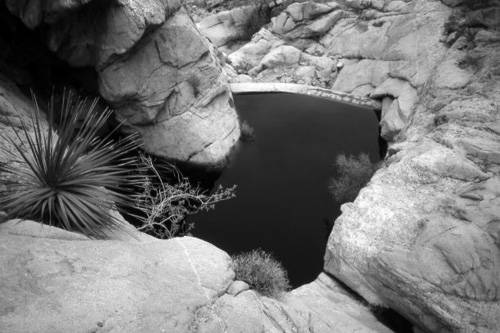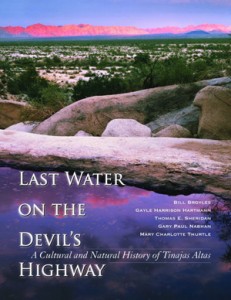Written by an expert cast of UA affiliates, “Last Water on the Devil’s Highway: A Cultural and Natural History of Tinajas Altas” is perfect for desert aficionados and armchair explorers wishing to learn more about southwestern Arizona.
The University of Arizona Press, in collaboration with the University of Arizona Southwest Center, has announced the release of “Last Water on the Devil’s Highway: A Cultural and Natural History of Tinajas Altas.“
Written by an expert cast of UA affiliates and well-known Tucsonans, this book is perfect for desert aficionados and armchair explorers wishing to learn more about the High Tanks, the iconic natural watering holes of southwestern Arizona.
The Devil’s Highway – El Camino del Diablo – crosses hundreds of miles and thousands of years of Arizona and Southwest history. This heritage trail follows a torturous route along the U.S. Mexico border through a lonely landscape of cactus, desert flats, drifting sand dunes, ancient lava flows and searing summer heat.
The most famous waterhole along the way is Tinajas Altas, or High Tanks, a series of natural rock basins that are among the few reliable sources of water in this notoriously parched region.
UA scholars Bill Broyles, Thomas E. Sheridan, Gary Paul Nabhan (Southwest Center) and Gayle Harrison Hartmann (Arizona State Museum) alongside local author and Executive Director of Pan Left Productions Mary Charlotte Thurtle share the story of Tinajas Altas, drawing on their expertise in multiple fields including archaeology, history, biology and ecology.
Gayle Hartmann and Mary Charlotte Thurtle spent three months living in tents near Tinajas Altas while conducting an archaeological survey of the area; historian Tom Sheridan carefully searched the documents of the early Spanish priests and explorers; Gary Paul Nabhan, an ethnoecologist, consulted Native Americans who had personal recollections of the region; and “desert rat” Bill Broyles visited Tinajas Altas on scores of occasions, sometimes arriving by vehicle and sometimes by foot, and researched the recent history of the area.
The result is a fascinating exploration and highly readable account of the human and natural history of this special place. Readers can feel like pioneers, following in the footsteps of early Native Americans, Spanish priests and soldiers, gold seekers and borderland explorers, tourists and scholars.
Combining authoritative writing with a rich array of more than 180 illustrations and maps as well as detailed appendixes providing up-to-date information on the wildlife and plants that live in the area, the book allows readers to uncover the secrets of this remarkable place, revealing why it still attracts intrepid tourists and campers today
– By Holly Schaffer
*Source: The University of Arizona


